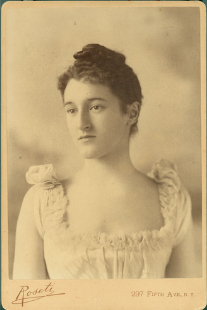
Beatrix Cadwalader Farrand was an American landscape gardener and landscape architect. Her career included commissions to design about 110 gardens for private residences, estates and country homes, public parks, botanic gardens, college campuses, and the White House. Only a few of her major works survive: Dumbarton Oaks in Washington, D.C., the Abby Aldrich Rockefeller Garden on Mount Desert, Maine, the restored Farm House Garden in Bar Harbor, the Peggy Rockefeller Rose Garden at the New York Botanical Garden, and elements of the campuses of Princeton, Yale, and Occidental.

Châteauesque is a Revivalist architectural style based on the French Renaissance architecture of the monumental châteaux of the Loire Valley from the late fifteenth century to the early seventeenth century.
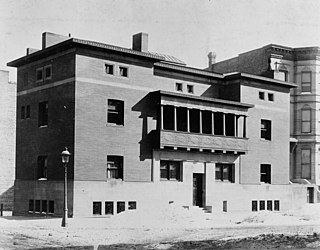
The James Charnley Residence, also known as the Charnley-Persky House, is a historic house museum at 1365 North Astor Street in the Gold Coast neighborhood of Chicago, Illinois. Built in 1892, it is one of the few surviving residential works of Louis Sullivan.
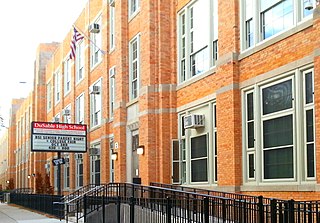
Jean Baptiste Point DuSable High School is a public four-year high school campus located in the Bronzeville neighborhood on the South Side of Chicago, Illinois, United States. DuSable is owned by the Chicago Public Schools district. The school was named after Chicago's first permanent non-native settler, Jean Baptiste Point Du Sable. Constructed between 1931 and 1934, DuSable opened in February 1935. Since 2005, the school campus serves as home to two smaller schools: the Bronzeville Scholastic Institute and the Daniel Hale Williams Preparatory School of Medicine. Both of the schools use the DuSable name in an athletics context. The DuSable Leadership Academy was housed at the location until it closed after the 2015–16 school year. The school building was designated a Chicago Landmark on May 1, 2013.

The DuSable Black History Museum and Education Center, formerly the DuSable Museum of African American History, is a museum in Chicago that is dedicated to the study and conservation of African-American history, culture, and art. It was founded in 1961 by Margaret Taylor-Burroughs, her husband Charles Burroughs, Gerard Lew, Eugene Feldman, Bernard Goss, Marian M. Hadley, and others. They established the museum to celebrate black culture, at the time overlooked by most museums and academic establishments. The museum has an affiliation with the Smithsonian Institution.

Solon Spencer Beman was an American architect based in Chicago, Illinois and best known as the architect of the planned Pullman community and adjacent Pullman Company factory complex, as well as Chicago's renowned Fine Arts Building. Several of his other largest commissions, including the Pullman Office Building, Pabst Building, and Grand Central Station in Chicago, have since been demolished. Beman designed numerous Christian Science churches and influenced the design of countless more.

The Harriet Beecher Stowe House is a historic house museum and National Historic Landmark at 73 Forest Street in Hartford, Connecticut that was once the home of Harriet Beecher Stowe, author of the 1852 novel Uncle Tom's Cabin. Stowe lived in this house for the last 23 years of her life. It was her family's second home in Hartford. The 5,000 sq ft cottage-style house is located adjacent to the Mark Twain House and is open to the public. It was listed on the National Register of Historic Places in 1970, and declared a National Historic Landmark in 2013.
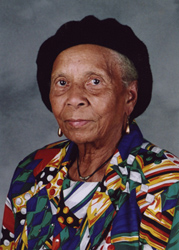
Margaret Taylor-Burroughs, also known as Margaret Taylor Goss, Margaret Taylor Goss Burroughs or Margaret T G Burroughs, was an American visual artist, writer, poet, educator, and arts organizer. She co-founded the Ebony Museum of Chicago, now the DuSable Museum of African American History. An active member of the African-American community, she also helped to establish the South Side Community Art Center, whose opening on May 1, 1941 was dedicated by the first lady of the United States Eleanor Roosevelt. There, at the age of 23, Burroughs served as the youngest member of its board of directors. A long-time educator, she spent most of her career at DuSable High School. Taylor-Burroughs was a prolific writer, with her efforts directed toward the exploration of the Black experience and toward children, especially to their appreciation of their cultural identity and to their introduction and growing awareness of art. She is also credited with the founding of Chicago's Lake Meadows Art Fair in the early 1950s.
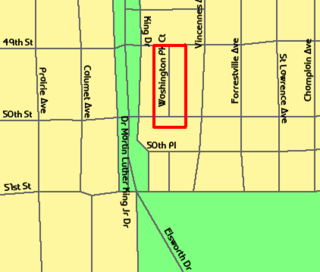
The Washington Park Court District is a Grand Boulevard community area neighborhood on the South Side of Chicago, Illinois. It was designated a Chicago Landmark on October 2, 1991. Despite its name, it is not located within either the Washington Park community area or the Washington Park park, but is one block north of both. The district was named for the Park.

The Black Metropolis–Bronzeville District is a historic African American district in the Bronzeville neighborhood of the Douglas community area on the South Side of Chicago, Illinois.

The Astor Street District is a historic district in Central Chicago, Illinois.

The South Side Community Art Center is a community art center in Chicago that opened in 1940 with support from the Works Progress Administration's Federal Art Project in Illinois. Opened in Bronzeville in an 1893 mansion, it became the first black art museum in the United States and has been an important center for the development Chicago's African American artists. Of more than 100 community art centers established by the WPA, this is the only one that remains open.

The Charles Gates Dawes House is a historic house museum at 225 Greenwood Street in Evanston, Illinois. Built in 1894, this Chateauesque lakefront mansion was from 1909 until his death the home of Charles Gates Dawes (1865–1951) and his family. Dawes earned the 1925 Nobel Peace Prize for his plan to alleviate the crushing burden of war reparations Germany was required to pay after World War I. Dawes served as U.S. Vice President under Calvin Coolidge, a general during World War I, and as United States Ambassador to Great Britain. Dawes was a descendant of William Dawes, who along with Paul Revere, rode to alarm the colonists that the British regulars were coming on the night before the Revolutionary War began. The house, a National Historic Landmark, is now owned by the Evanston History Center, which offers tours.

Kimberly Crest House and Gardens is a French château-style Victorian mansion located in Redlands, California. The property is a registered California Historical Landmark and is listed on the National Register of Historic Places.
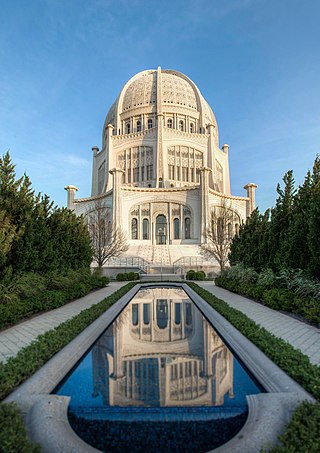
The Baháʼí House of Worship in Wilmette, Illinois is a Baháʼí temple. It is the second Baháʼí House of Worship ever constructed and the oldest one still standing. It is one of eight continental temples, constructed to serve all of North America.

Aileen Osborn Webb (1892–1979) was an American aristocrat and a patron of crafts. She was a founder of the organization now known as the American Craft Council, which gives an annual award named for her. She was considered a "principal supporter" of the American Craft movement during the Great Depression. She founded the School for American Craftsmen (SAC), which is now part of Rochester Institute of Technology (RIT).

The Iowa Federation of Colored Women's Clubs (IFCWC) was an umbrella organization serving African-American women's clubs in Iowa. The motto of IFCWC was "Sowing Seeds of Kindness", and the organization was affiliated with the National Association of Colored Women. The club produced a journal called the Iowa Colored Woman. IFCWC sent delegates to represent the state at national conventions and opportunities such as "Colored Women's day" at the 1939 New York World's Fair. The IFCWC is also known for creating a black women's dormitory for the University of Iowa before the school was fully integrated. The building has been listed on the National Register of Historic Places.

The John W. Griffiths Mansion is a historic house at 3806 S. Michigan Avenue in the Douglas community area of Chicago, Illinois. The house was built in 1893-94 for John W. Griffiths, a prominent building contractor who worked in Chicago during its reconstruction after the Great Chicago Fire. Architect Solon Beman designed the Chateauesque house, which features a limestone-clad exterior, an octagon-shaped tower on its northeast corner, corbels along the roof line, and dormers topped with finials. The house was typical of those on Michigan Avenue at the time, as many affluent Chicagoans built their homes there; it was also one of the last such homes, as the Panic of 1893 and industrial development led the area to lose its popularity with the wealthy. After Griffiths died in the 1930s, the home became the meeting place of the Quincy Club, a social club for black railroad workers. It later became the first home of the DuSable Museum of African American History.
Henry L. Newhouse (1874–1929) was an architect in Chicago, Illinois. His work includes the Milford Theatre (Chicago), Blackstone-State Theater, and Sutherland Hotel. He also designed Elam House (1903) and Chicago Defender Building.
Victoria Newhouse is an American architectural historian. She founded the Architectural History Foundation, a nonprofit scholarly book publisher, and is a frequent author on architecture-related subjects. She has written for major architecture journals and newspapers.

















